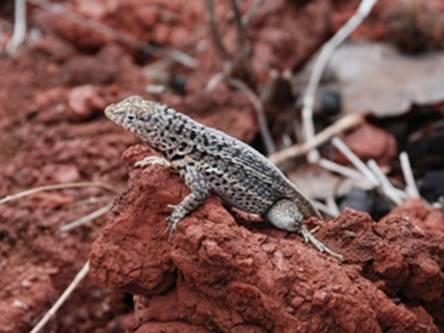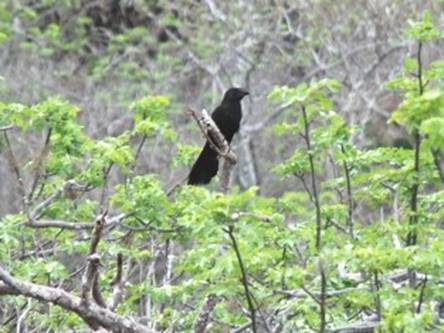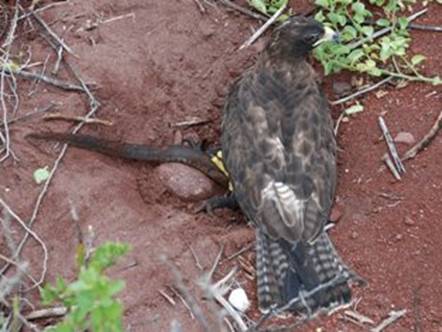Trucking Along...& Galapagos Part VIII. 07:34:49S 116:07:98W

|
First
off all please accept my apology for the confusion as to why the Blogs have
recently not been posted. Mailasail are looking into what could have caused
this. Hopefully it will not happen again, because normally these are very
reliable. Since the last (chronological) blog, we are still Goose
winging with the Staysail as well and are really eating up the miles, with
speeds of up to 9.5knots SOG being recorded. We have covered the best
part of 200nm in the last 24 hours. Mind you not the most comfortable of rides,
but the quicker we get the Nuku Hiva, the happier I will be! Just 1421NM to go
now. Or to put it another way, To continue the Galapagos saga…… Rabida. This is a very different
The picture below shows off the red lava and the rugged terrain
of this
Another delightful creature to inhabit this island is the
local Lava Lizard. These are chameleon. If you get too close, they turn a rust
red colour. I did get one picture of this happening. But the camouflage is so
effective you can’t see the lizard clearly on these low resolution
pictures. So you will just have to take my word for it. Or come and see for yourself,
which is a much better idea!
Rabida is also an important nesting ground for Marine
Iguanas. More of which anon. But this does mean that quite a lot of the beach
area is restricted access. Rabida, in common with most The chap below is interesting. They are called Smooth Billed
Annie’s. They are about the same size as a rook. They are not native to
Galapagos, but were introduced abut 100 years ago by cattle farmers. I believe
they came from
The other pests on this island are wasps. (Also imported). Mercifully
we were not bothered by them, but there were a lot of containers on the ground,
which are used to attract the wasps and then kill them. I did read that Mina
birds had also been introduced to some We did see lots of beautiful small birds, especially Yellow
Warblers. I managed to get several pictures of bushes,……… where
they had been……………………………… But the star of the show on this We did not expect to see any, but within 10 minutes of
landing on the
The staple diet of these hawks is marine Iguana! The principle way they hunt them is to wait until the female
Iguana is entering her nest, then because she has her head buried in the sand
and cannot see the hawk, it swoops down and buries its sharp and powerful talons
in the tail of the Iguana, One hawk holds the Iguana, then the second one
swoops down and then drags the doomed Iguana backwards out of its nest. This
one put up quite a struggle. In the end it tired and was dragged out. As soon
as the head was clear of the nest the female Hawk drove its beak into the
Iguanas head and that as they say was the end of that.
Anyone for fresh Iguana sushi…….. Note, in the interests of good taste I did
not publish the final picture in this sequence. Next up, we cross the equator again…twice, and visit |





